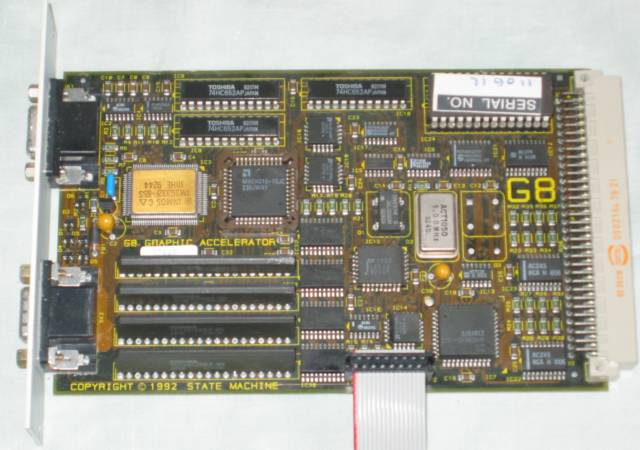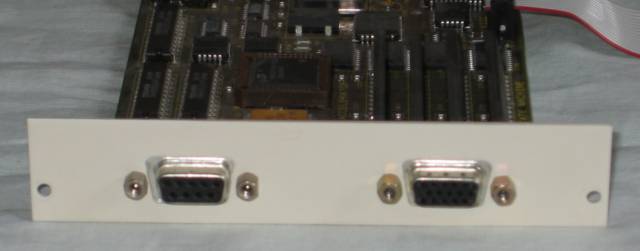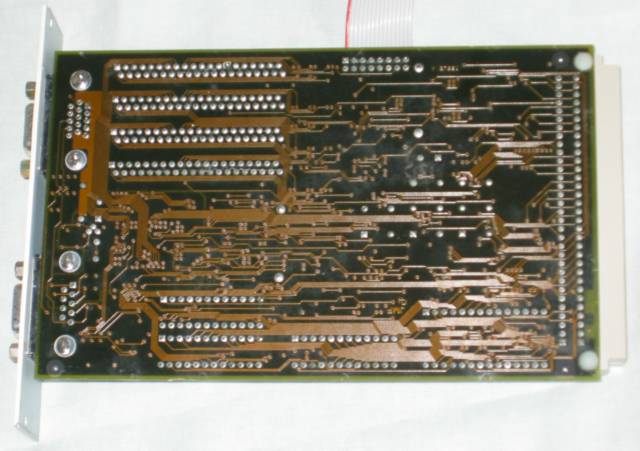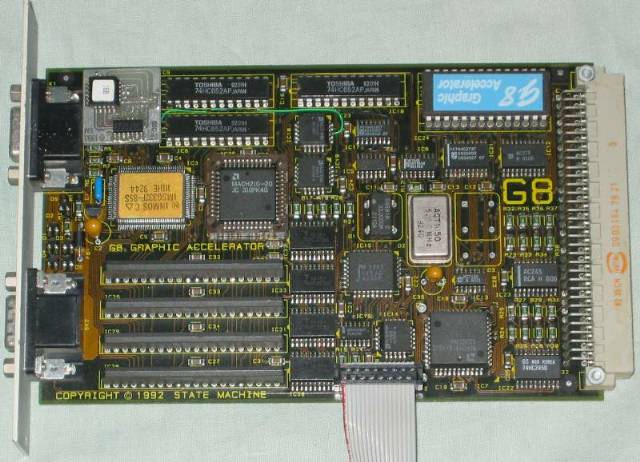
[Index by function] [Index by Company]

State Machine G8 Graphics Accelerator (top)
The ribbon cable connects to the Genlock connector on the computer's motherboard.

State Machine G8 Graphics Accelerator (back)
The computers monitor is unplogged from the socket on the back of the computer and plugged into the appropriate socket on the back of the State Machine G8 card.

State Machine G8 Graphics Accelerator (bottom)

State Machine G16 Graphic Accelerator (top)
The State Machine G8 Graphics Accelerator provides improved graphics performance for Acorn Archimedes computers from the A300 through to the A5000.
The Archimedes VIDC based graphics system is unchanged from the original A300 to the A5000. By 1992 the graphics capabilities of a standard PC had overtaken the Archimedes range with resolutions of 800x600 in 256 colours or 1024 x 768 in 16 colours.
The other problem with the Archimedes VIDC based graphics is that the main DRAM is used as the frame store. This means that the ARM processor has to stop accessing the main DRAM whenever the video system wants the next part of the screen. The Archimedes slows down as the resolution and/or number of colours increases.
The G8 Graphics Accelerator card overcomes these problems by having a local Video RAM frame store on the graphics card and by permanently clocking the VIDC chip at the frequency for the correct sound.
The G8 Graphics card takes the data from the VIDC's nibble port, which provides 4 bits of data which represents the value of the pixel to be displayed. These 4 bits are buffered, combined and then written into one side of the VRAM store on the G8 card.
The graphics controller on the G8 Graphic card then accesses the other side of the VRAM frame store, and displays the data on the screen.
This means that the Archimedes VIDC video system runs as though it was displaying 25 frames per second, and therefore displays high resolutions without affecting the speed of the machine too much.
The second card is an updated version of the original G8 called the G16. The only difference is in the software.
The G8 Graphic Accerator Card User Guide is in the Documents section.
The G16 Support Disc is in the software section.